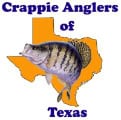The most important thing to remember is it just takes time to learn how to use your graph for the type of fishing you do and the type of water you fish. There really are no short-cuts. I've been doing some reading on the Internet and found a lot of conflicting '"expert" opinions so you can get confused real easy.
If you can picture in your mind how a graph works by plotting sonar returns on your screen and then moving that information across and off the other side of your screen you can learn to recognize what is on your screen.
If you'll take the time to experiment with different setting and options looking at different known objects under the water it will be well worth it. For example: Take a dead fish that is still intact with it’s air bladder in place and see how it looks at 10 and 20-feet deep under your transducer. Take a fish carcass and suspend it below your transducer and see how it compares to a whole fish. Take a live fish and let it swim around under your boat and see what it looks like. Tie fishing line directly to each of these so you know your not picking up any terminal tackle. If you can’t see any sonar returns depicting fish under your boat doing any of these experiments then adjust your graph until you do.
Yesterday, I dumped a tub full of fish remains over the front of my boat as it was slowly moving forward and they showed up real well – first as a tight bunch similar to a school of bait fish – even got a few fish symbols around the top edge. Then as the fish scraps separated as they sank towards the bottom the wad on the graph spread out and got deeper until it went out of the view of the transducer. There weren’t any air bladders in any of the fish remains so this experiment again confirmed to me that my graph, set the way I use it, doesn’t necessarily detect fish by their air bladders.
Yesterday, I had a kid jigging a ¼-ounce spoon while sitting near the front of my boat over the transducer. When he would ask me if he was fishing deep enough I would move the boat towards the side he was fishing on, which moved the boat (and transducer) over the spoon so my graph could pick it up. We could then see his spoon showing up on the graph like an electrocardiogram and I could tell him how deep his spoon was at the top and the bottom of each stroke.
He caught five real good crappie jigging that spoon (and several others on minnows) and you can tell by the look on his face how much he enjoyed it. He’s on the left in this picture:
It's hard to get good digital pictures of my graph because of the reflection from the screen but I'll work on that when I have time.


 Likes:
Likes:  Thanks:
Thanks:  HaHa:
HaHa: 

 We, the unwilling, led by the unknowing, are doing the impossible for the ungrateful. We have done so much, for so long, with so little, we are now qualified to do anything with nothing."
We, the unwilling, led by the unknowing, are doing the impossible for the ungrateful. We have done so much, for so long, with so little, we are now qualified to do anything with nothing."















